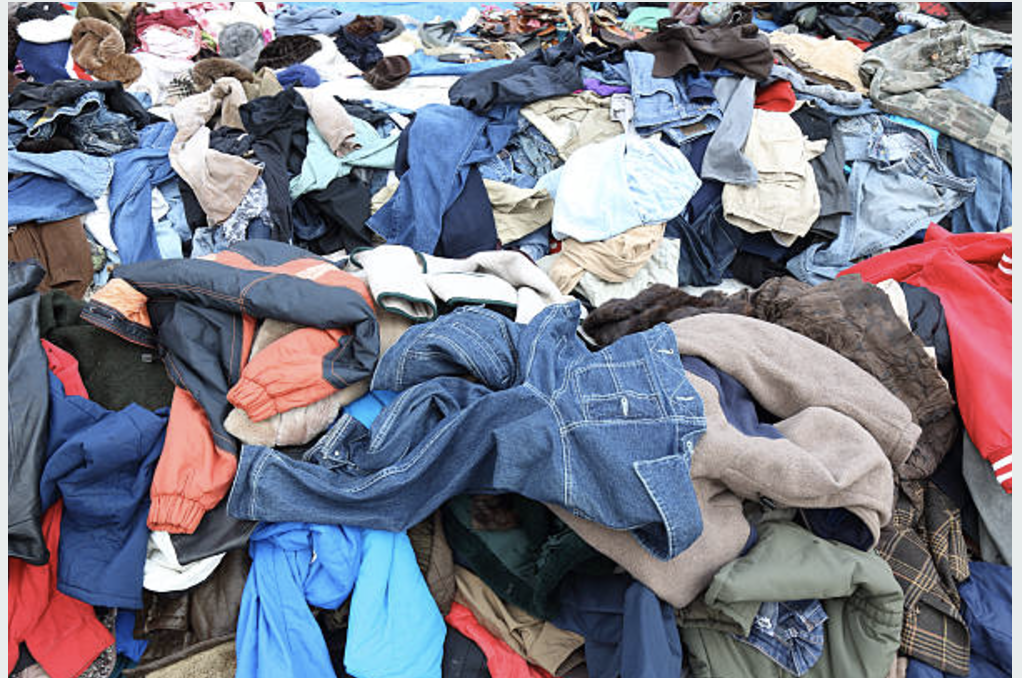Clothing Recycling: How Your Old Threads Can Help Save the Planet
Hey there! Let’s talk about something super important and surprisingly cool: recycling your clothes. Yeah, that hoodie you’ve worn a million times or the jeans you outgrew last year—they can have a whole new life instead of ending up in the trash. If you’re into the environment and want to know how your wardrobe can help save the planet, you’re in the right place.
I get it—thinking about clothes and recycling in the same sentence sounds kinda weird. But once I started learning about it, I realized that what we wear and how we deal with it when we’re done is a huge deal for the environment. Let me break it all down for you in a way that’s fun, easy to understand, and totally doable.
Why Should We Recycle Clothes?
First, let’s talk about why clothing recycling matters. Here are some facts that blew my mind when I first read about them:
- Mountains of Trash: Every year, millions of tons of clothing end up in landfills. In the U.S. alone, about 11 million tons of textiles are trashed annually.
- Not-so-Nice Decomposition: A lot of clothes are made of synthetic materials like polyester or nylon. These can take hundreds of years to break down in a landfill, all while releasing harmful chemicals into the soil and water.
- Fashion Pollution: The fashion industry is one of the biggest polluters in the world. Making clothes uses tons of water, energy, and chemicals. Recycling helps cut down on the need for new materials.
- Your Chance to Make a Difference: Every time you recycle an old T-shirt or pair of sneakers, you’re helping reduce waste and giving those items a second life. It’s like being a superhero for the planet!
The Life Cycle of Clothes: From Closet to…Where?
When you’re done with a piece of clothing, where does it go? Here’s what usually happens:
- The Trash Option (Boo!): Many people throw old clothes in the garbage. These end up in landfills or incinerators, polluting the planet.
- The Donation Option (Yay!): Donating clothes to a thrift store or charity gives them a chance to be worn by someone else.
- The Recycling Option (Double Yay!): Recycling takes your worn-out clothes and turns them into something new, like insulation, cleaning rags, or even new fabric.
How Can You Recycle Clothes?
You’re probably wondering, “Okay, but how do I actually recycle clothes?” Don’t worry—I’ve got you covered. Here are some simple ways to give your clothes a new life.
1. Donate, Donate, Donate!
If your clothes are in decent condition but you just don’t want them anymore, donating is a great first step. Here’s how:
- Thrift Stores: Places like Goodwill, The Salvation Army, or local thrift shops will gladly take your gently used clothes.
- Charities: Many organizations collect clothing for people in need, like homeless shelters or disaster relief programs.
- Online Options: Apps like Poshmark or Depop let you sell or swap clothes, while platforms like Freecycle allow you to give them away for free.
💡 Pro Tip: Make sure the clothes are clean and wearable before donating. Nobody wants your ketchup-stained T-shirt (unless it’s vintage and cool, then maybe).
2. Find Clothing Recycling Programs
Sometimes, clothes are too damaged to donate. That’s where recycling programs come in.
- Retail Drop-Offs: Big brands like H&M, Levi’s, and The North Face have recycling bins in their stores. You can drop off old clothes (any brand!) and sometimes get a discount for doing it.
- Recycling Centers: Check if your city has a textile recycling facility. These centers can turn old clothes into things like insulation or carpet padding.
- Mail-In Programs: Companies like TerraCycle and For Days offer mail-in services for clothing recycling.
3. Upcycle Your Clothes
Upcycling is just a fancy word for turning old clothes into something new and awesome.
- DIY Projects: Turn an old T-shirt into a tote bag, cut jeans into shorts, or make scrunchies out of fabric scraps.
- Crafting Communities: Pinterest and YouTube are full of ideas for upcycling projects.
- Get Creative: I once turned a holey sweater into a cozy pillowcase—it was surprisingly easy and super cute.
4. Sell or Swap
If your clothes are still in good shape and you think someone else might love them, try selling or swapping.
- Host a Clothing Swap Party: Invite friends over, lay out your clothes, and trade! It’s like shopping but free.
- Online Selling: Apps like Poshmark, ThredUp, or Vinted make it easy to sell clothes from your phone.
- Local Events: Check out swap meets or flea markets in your area.
What Happens to Recycled Clothes?
You might be wondering, “Okay, I dropped off my clothes—what happens next?” Here’s the journey of recycled clothing:
- Sorting: Clothes are sorted by material type and condition.
- Reusing: Items in good condition might be resold or donated.
- Breaking Down: Worn-out clothes are shredded into fibers, which can be used for things like stuffing or new fabrics.
- New Life: Some materials, like cotton or polyester, can be recycled into new clothes.
Cool Benefits of Clothing Recycling
Still need convincing? Here are some awesome benefits of recycling your clothes:
- Saves Resources: Recycling reduces the need for new materials like cotton (which uses a ton of water) or polyester (which comes from oil).
- Cuts Down on Waste: Fewer clothes in landfills mean less pollution.
- Fights Climate Change: Recycling uses less energy than making new clothes, which helps lower carbon emissions.
- Helps Communities: Donating clothes can provide affordable options for people in need.
Real Talk: Challenges of Clothing Recycling
Okay, I won’t lie—clothing recycling isn’t perfect. Here are some challenges:
- Limited Recycling Facilities: Not every city has textile recycling programs.
- Blended Fabrics: Clothes made of mixed materials (like cotton-polyester blends) are harder to recycle.
- Fast Fashion Problem: Cheap, low-quality clothes often can’t be reused or recycled.
But don’t let this discourage you! Even small steps, like donating or upcycling, can make a big difference.
My Personal Journey with Clothing Recycling
Let me tell you about the first time I recycled clothes. I had this pile of old T-shirts—too small to wear, but I felt guilty throwing them away. I found a local textile recycling program and dropped them off. It felt amazing knowing they wouldn’t end up in a landfill.
Since then, I’ve gotten into upcycling. My favorite project was turning an old pair of jeans into a cute denim backpack. It took a bit of effort, but every time I use it, I get compliments and a chance to talk about sustainability.
Recycling clothes has become a habit for me now, and it’s something I encourage my friends and family to do. It’s such an easy way to help the environment—and honestly, it makes me feel good knowing I’m making a difference.
How You Can Start Today
Ready to get involved? Here’s how to start your clothing recycling journey:
- Do a Closet Clean-Out: Sort your clothes into three piles: keep, donate, and recycle.
- Research Options: Look up donation centers or recycling programs near you.
- Get Crafty: Try a simple upcycling project, like turning an old shirt into a tote bag.
- Spread the Word: Tell your friends and family about clothing recycling—they might join you!
Final Thoughts
Recycling your clothes might seem like a small thing, but it’s part of a bigger movement to protect the planet. Every T-shirt, pair of jeans, or sneaker you save from the landfill is a step toward a more sustainable future.
So, the next time you’re cleaning out your closet, think about where your clothes could go. Whether it’s donating, upcycling, or recycling, there are so many ways to give your old threads a new life. And who knows? You might just inspire others to do the same.
What’s your favorite way to recycle or repurpose clothes? I’d love to hear your ideas—let’s keep the conversation going!

